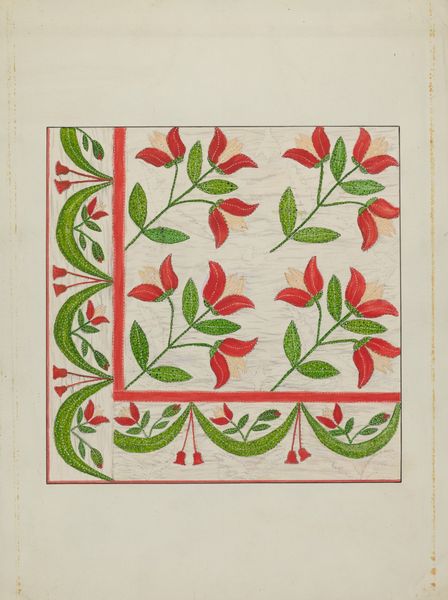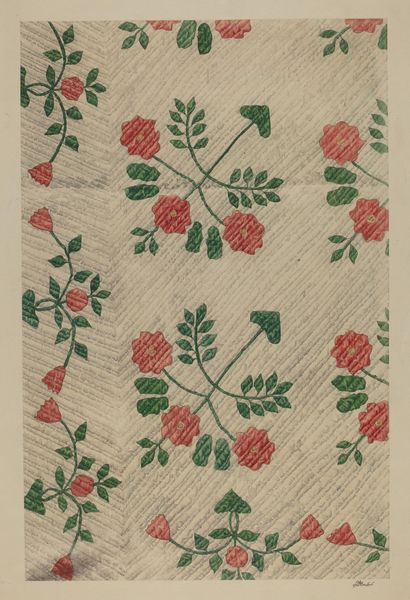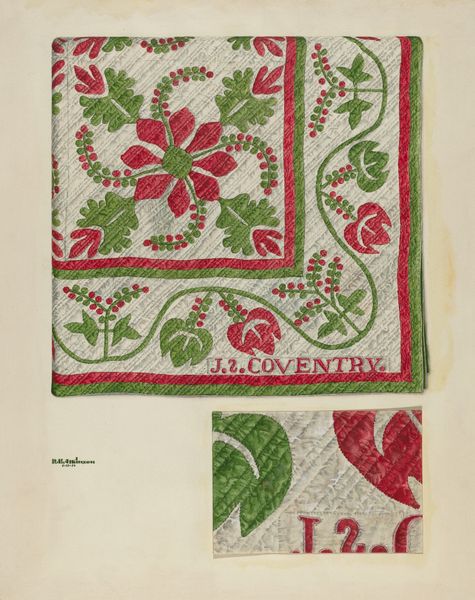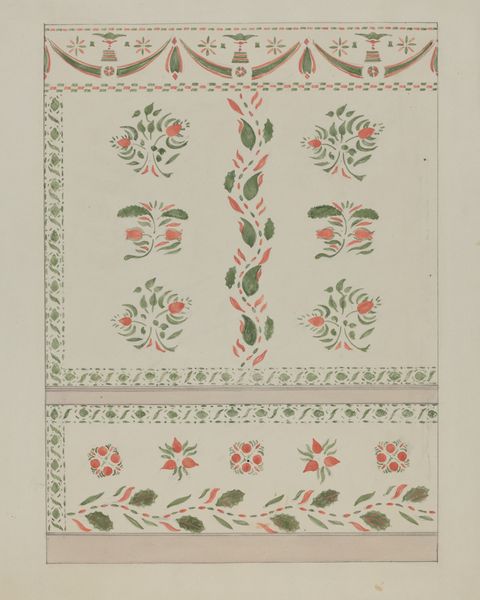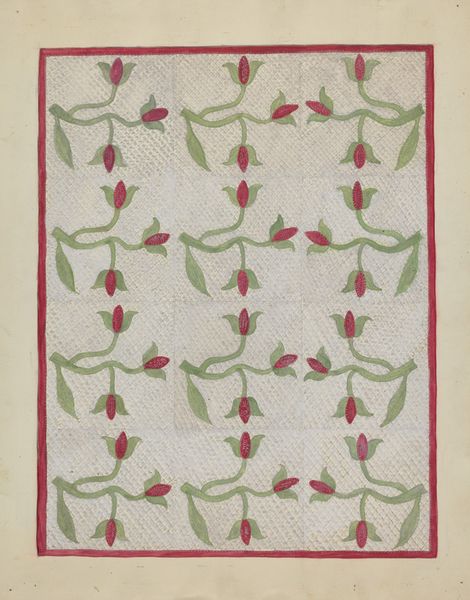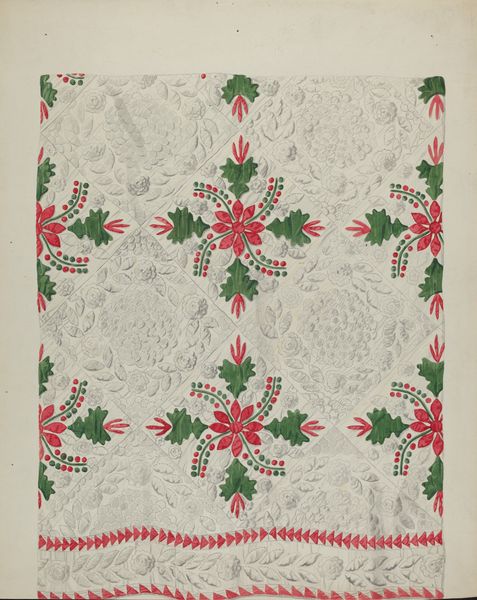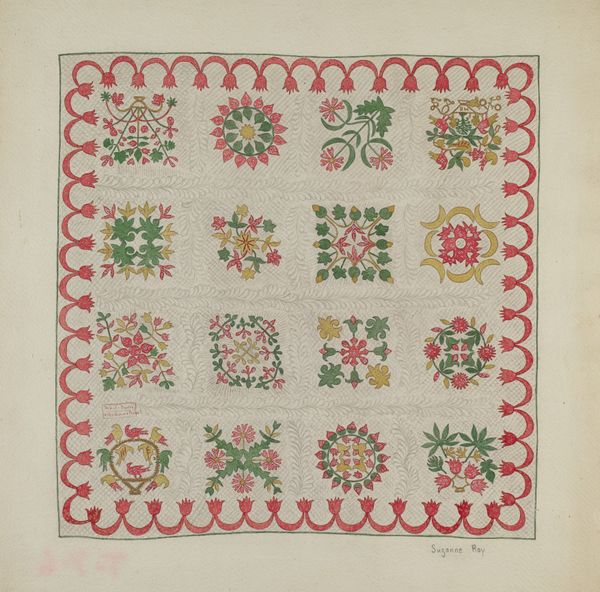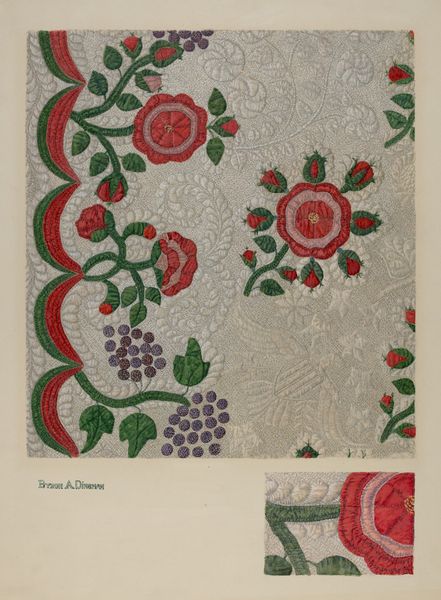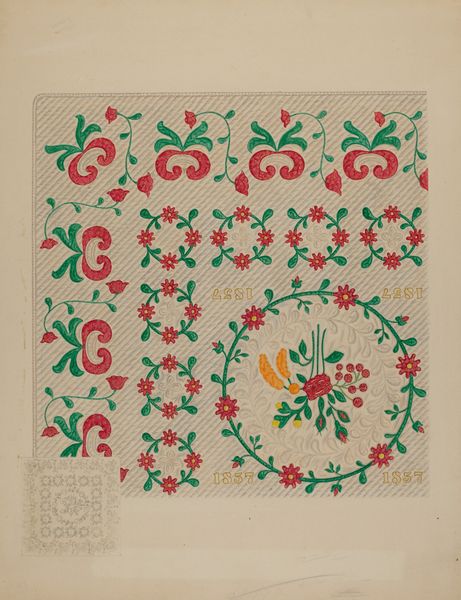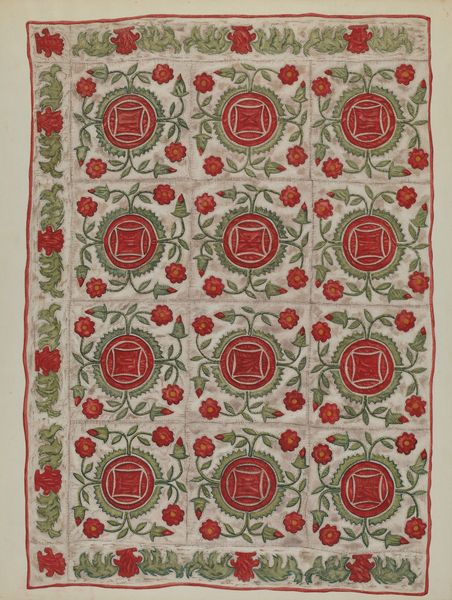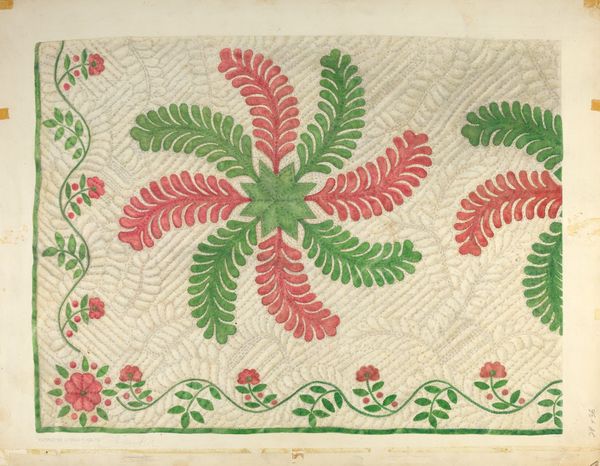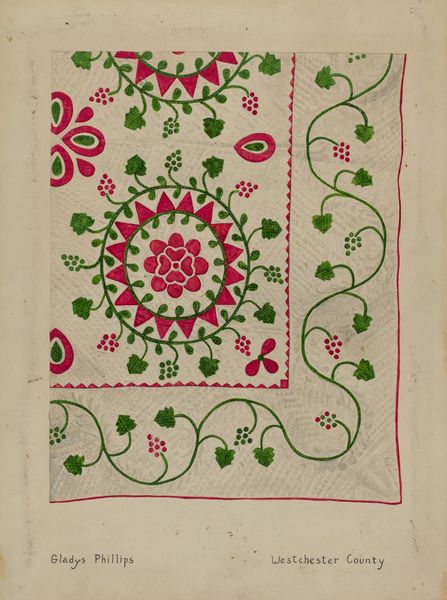
drawing, mixed-media, textile, paper
#
drawing
#
mixed-media
#
pattern
#
textile
#
paper
#
organic pattern
#
textile design
Dimensions: overall: 35.8 x 28 cm (14 1/8 x 11 in.)
Copyright: National Gallery of Art: CC0 1.0
Editor: Here we have "Quilt," a mixed-media drawing on paper and textile from around 1936 by Therkel Anderson. It’s really striking how crisp and clean the floral pattern is; it almost feels like a blueprint. What's your take on it? Curator: I see it as a powerful commentary on the intersections of gender, labor, and artistic expression. Consider the historical context: quilt-making was often relegated to women, deemed "craft" rather than "art." Anderson's work challenges that hierarchy by elevating the quilt pattern to the level of fine art. What does the clean presentation evoke for you, thinking about its function as a *potential* quilt? Editor: I guess it takes away from the utility of the quilt and emphasizes the design itself, right? It's like extracting the artistic potential. Does this connect to anything beyond the immediate subject matter? Curator: Absolutely. The "Quilt" embodies the reclamation of domestic artistry as a legitimate form of creative production. During this time, women's creative works were often undervalued because of gender biases, especially textiles. Think about whose stories get told, whose work gets recognized. How might this image act as a form of resistance to traditional, patriarchal narratives within art history? Editor: So, it's about validating overlooked creative practices. By highlighting this quilt design, Anderson seems to be advocating for the recognition of these undervalued forms of art. Curator: Precisely. It prompts us to question the institutional structures that have historically marginalized certain voices and artistic forms and reflect on how design impacts women in both domestic and public life. Editor: This really makes you see this piece as much more than a pretty pattern! Curator: Exactly. It demonstrates the powerful potential for art to challenge, critique, and ultimately reshape societal norms and perspectives on design.
Comments
No comments
Be the first to comment and join the conversation on the ultimate creative platform.
